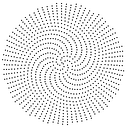Visualizing geospatial data
Online and in-person training courses
Visualizing geospatial data can provide a more digestible way of understanding how (measurable) phenomena evolve and interact across time and space.
Thanks to user-friendly GIS software, visualizing changes in the magnitude, frequency and geographic distribution of (digitally recorded) natural or anthropogenic events is made relatively easier. The trick is learning how to automate it all.
Tailored to research organizations, media outlets and universities, I am currently offering training courses on how to import, clean, merge and visualize geospatial data.
The courses explore how to use data analytics software to generate visualizations — in both static and interactive formats.
This training is best suited for groups of 5–10 individuals with 1–2 years experience in statistical analysis and a budget for course fees.
The following softwares will be used for the training
- Desktop: QGIS & Tableau
- Web-based: Mapbox, Figma & DataWrapper
Course options:
- Online courses with step-by-step (live and recorded) guidance on how to ingest, clean, merge and visualize data.
- In-person courses with guiding notes & exercises.
For more information on courses and costings, feel free to contact me: luengo.cabrera@gmail.com
The courses will demonstrate how to produce visuals like these:
